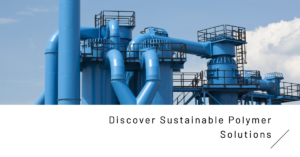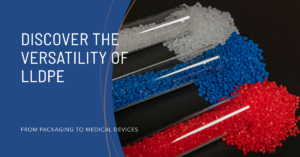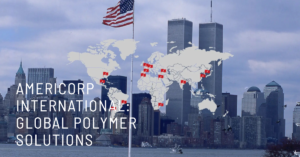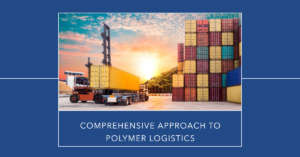Polypropylene (PP) is a versatile thermoplastic polymer that has gained significant popularity in various industries due to its exceptional properties and wide range of applications. In this article, we will provide an in-depth overview of PP and its variations, including homopolymer, random copolymer, and impact copolymer. We will also discuss the different processing methods and applications for each PP type. Additionally, we will showcase Americorpint International’s range of PP resins and highlight their suitability for specific manufacturing requirements.
1. Introduction to Polypropylene (PP)
Polypropylene, commonly referred to as PP, is a thermoplastic polymer that belongs to the polyolefin group of plastics. It is a lightweight and durable material with excellent chemical resistance, high stiffness, and good impact strength. PP is known for its ability to withstand high temperatures and has a low melting point, making it suitable for various manufacturing processes.
2. Understanding the Different Variations of PP
2.1 Homopolymer
Homopolymer PP is the most common type of PP and is produced by polymerizing propylene monomers. It offers excellent mechanical properties, high tensile strength, and resistance to chemicals and moisture. Homopolymer PP is widely used in applications that require stiffness, such as rigid packaging, automotive components, and appliances.
2.2 Random Copolymer
Random copolymer PP is produced by copolymerizing propylene monomers with a small amount of ethylene or other alpha-olefin comonomers. This variation of PP offers improved clarity, flexibility, and impact resistance compared to homopolymer PP. Random copolymer PP is commonly used in applications such as food containers, housewares, and medical devices.
2.3 Impact Copolymer
Impact copolymer PP is produced by incorporating a higher amount of rubbery ethylene-propylene elastomers into the polymer matrix. This variation provides excellent impact strength, toughness, and resistance to low temperatures. Impact copolymer PP finds applications in products that require high impact resistance, such as automotive bumpers, battery cases, and industrial storage containers.
3. Processing Methods for PP
PP can be processed using various methods, including:
- Injection Molding: This process involves melting the PP resin and injecting it into a mold cavity under high pressure. Injection molding is widely used for the production of intricate shapes and parts with high precision.
- Extrusion: In extrusion, the PP resin is melted and forced through a die to create continuous profiles or sheets of specific shapes. Extrusion is commonly used in the production of pipes, tubes, films, and sheets.
- Blow Molding: This process is used to create hollow products, such as bottles and containers. Molten PP is extruded into a mold, and pressurized air is then used to expand the molten resin and shape it against the mold walls.
- Thermoforming:
Thermoforming involves heating a sheet of PP and shaping it into the desired form using molds or vacuum pressure. It is commonly used in the production of packaging trays, disposable cups, and lids.
4. Applications of PP
PP is widely used in various industries due to its versatile properties. Some of the key applications of PP include:
4.1 Packaging Industry
PP is extensively used in the packaging industry for manufacturing bottles, containers, caps, and closures. It offers excellent chemical resistance, clarity, and moisture barrier properties, making it suitable for storing food, beverages, pharmaceuticals, and personal care products.
4.2 Automotive Industry
PP is widely used in the automotive industry for interior and exterior components. Its lightweight nature, impact resistance, and dimensional stability make it ideal for manufacturing dashboards, door panels, bumpers, and trims.
4.3 Electrical and Electronics Industry
PP is utilized in the electrical and electronics industry for the production of insulating materials, cable sheaths, connectors, and switches. Its electrical properties, such as high dielectric strength and low electrical conductivity, make it suitable for these applications.
4.4 Medical and Healthcare Industry
PP is extensively used in the medical and healthcare industry for manufacturing medical devices, laboratory equipment, and packaging for pharmaceutical products. Its excellent chemical resistance, sterilizability, and biocompatibility make it a preferred choice in this sector.
4.5 Consumer Goods Industry
PP is employed in the production of various consumer goods, including toys, household appliances, furniture, and luggage. Its durability, colorfastness, and resistance to impact and abrasion make it suitable for these applications.
5. Americorpint International’s Range of PP Resins
Americorpint International offers a comprehensive range of PP resins that cater to diverse manufacturing needs. Their range includes high-quality homopolymer, random copolymer, and impact copolymer PP resins. These resins are carefully manufactured to meet the stringent quality standards and offer consistent performance across different applications.
Americorpint International’s PP resins provide excellent processability, mechanical properties, and chemical resistance. They are available in various grades, allowing manufacturers to choose the most suitable resin for their specific requirements. To explore Americorpint International’s range of PP resins, visit their website for detailed product information and specifications.
6. Choosing the Right PP for Your Manufacturing Needs
When selecting the right PP for your manufacturing needs, several factors should be considered, such as the desired mechanical properties, processing requirements, end-use applications, and regulatory compliance. Consulting with a knowledgeable material supplier or a technical expert can help identify the most suitable PP resin for your specific requirements.
Consider the following factors when choosing the right PP:
- Mechanical Properties: Evaluate the required stiffness, impact resistance, tensile strength, and other mechanical properties based on the intended application.
- Processing Compatibility: Consider the processing method and equipment used in your manufacturing process. Ensure that the selected PP resin is compatible with the chosen processing technique.
- Regulatory Compliance: Verify if the PP resin meets the necessary regulatory requirements and industry standards applicable to your target market.
By carefully considering these factors, you can choose the right PP resin that optimizes the performance, efficiency, and cost-effectiveness of your manufacturing process.
7. Conclusion
Polypropylene (PP) is a versatile thermoplastic polymer with a wide range of applications across various industries. Understanding the different variations of PP, including homopolymer, random copolymer, and impact copolymer, allows manufacturers to select the most suitable material for their specific needs. Americorpint International offers a comprehensive range of PP resins that provide excellent performance and reliability
. By choosing the right PP and leveraging the expertise of trusted suppliers, manufacturers can enhance their production processes and meet their manufacturing needs efficiently and effectively.








